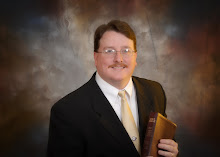In reading the Old Testament, there are passages where it becomes clear that God instituted rituals and ceremonies for the Hebrew people in which the symbolism would not have been understood in their time. Looking back from the cross of Jesus Christ, some of these rituals and ceremonies can be seen for what they symbolized. One such ceremony concerned "...the law of the leper for the day of his cleansing," which is explained in Leviticus 14:1-9.
God told Moses, "This shall be the law of the leper for the day of his cleansing: He shall be brought to the priest. And the priest shall go out of the camp, and the priest shall examine him; and indeed, if the leprosy is healed in the leper, then the priest shall command to take for him who is to be cleansed two living and clean birds, cedar wood, scarlet, and hyssop. And the priest shall command that one of the birds be killed in an earthen vessel over running water. As for the living bird, he shall take it, the cedar wood and the scarlet and the hyssop, and dip them and the living bird in the blood of the bird that was killed over the running water. And he shall sprinkle it seven times on him who is to be cleansed from the leprosy, and shall pronounce him clean, and shall let the living bird loose in the open field." (Leviticus 14:1-7, NKJV)
Both the items used as well as what was done with them is loaded with symbolism. It has been said that the "scarlet" was used to tie the "cedar wood" to the "hyssop," as well as to bind the living bird to it all for dipping. If the cloth or thread was to only serve a purpose like that, there appears to be no reason for it being dyed "scarlet," like the color of blood, unless it was meant to represent something.
The "cedar wood" was known by the ancients to have some medicinal qualities that relate to the treatment of skin conditions. It is said that it was used for medicinal purposes in this ceremony to cleanse the leper. The only problem is that the leper was to already be free of the disease before the ceremony was to take place. The ceremony was to make the leper able to come back among the people and to God in His Tabernacle, not to heal him of leprosy. Therefore, the cedar appears to also represent something, especially when you consider the blood red color of "cedar wood."
"Hyssop" is also said to have medicinal qualities that relate to the treatment of skin conditions, but this is not how it is used in Scripture. In Scripture, "hyssop" was used as the ancient paintbrush, because it naturally soaks up any liquid that it is dipped into. This is especially seen in the Passover account of Exodus. When God was about to bring one last judgment upon Egypt to make them let His people go, Moses instructed the people saying, "Pick out and take lambs for yourselves according to your families, and kill the Passover lamb. And you shall take a bunch of hyssop, dip it in the blood that is in the basin, and strike the lintel and the two doorposts with the blood that is in the basin. And none of you shall go out of the door of his house until morning. For the LORD will pass through to strike the Egyptians; and when He sees the blood on the lintel and on the two doorposts, the LORD will pass over the door and not allow the destroyer to come into your houses to strike you." (Exodus 12:21-23, NKJV) In the case of the leper's cleansing, "hyssop" would once again be stained with blood as part of God showing His mercy.
Then we come to the two birds. One would be killed, while the other one would live, but not without having a connection to the one being killed. The living bird, along with the "scarlet," the "cedar wood," and the "hyssop," would be dipped into the blood of the bird that had been killed. It would then go free, but not before being used to sprinkle that same blood onto the leper so that he could be pronounced "clean." Though the leper was to do some other things on his own after the ceremony (Leviticus 14:8-9), these things were to be done because he had been cleansed, not so that he would be cleansed. When that leper had seen the bird flying away with the blood still dripping from its wings, he had known his ordeal was over. As the bird went free, so did he from from the curse of leprosy!
Think of what Jesus did for you and me. We were all bound in the disease of sin, unable to approach God and unable to cleanse ourselves. Then Jesus came with God's only solution for our cleansing. Since we all faced death as the punishment for our sins (Romans 6:23), Jesus lived a sinless life in our place so that He could die in our place for our sins! He took the insults and blows of those who did not believe Him, He gave His back to those who would scourge it to shreds, He endured the mockery of those who called Him "King of the Jews," and He finally laid His own life down to be nailed to a Roman cross for six excrutiating hours. If it had ended there, history's conclusion concerning Jesus would have been that He was just another man dying on another cross, but it did not end there at all! Three days later, Jesus arose from the dead, proving that He really was more than a man and that He had indeed died in our place! Then after forty days of proving His victory to hundreds of witnesses, Jesus took flight on a cloud of glory, returning to Heaven from whence He came!
Now can you see Jesus in "...the law of the leper for the day of his cleansing?" He is seen in both the bird that died and the bird that lived. He first died, shedding His blood to pay that price for our cleansing, then He arose from the dead and ascended to Heaven with the marks on His body to prove that price had been paid! Like the leper, all those who saw Him take flight that day rejoiced to see their Savior going home with His mission completed!
The other items dipped into that blood to cleanse the leper now make a lot more sense. When Jesus was stripped of his own clothes to be mocked by the Roman garrison, it was a "scarlet" robe that was placed upon Him to be stained redder by the blood of the Son of God (Matthew 27:28). When Jesus was nailed to the cross, though it is not known what type of wood it was made of, His blood would have stained the wood red like "cedar." When Jesus spoke up from the cross and said, "I thirst," it was "hyssop" that was used with a sponge to relieve His thirst (John 19:28-29).
That final use of "hyssop" is especially suggestive, when one considers what King David once wrote. When David was under deep conviction for the sin that he had committed against God concerning Bathsheba, he pleaded, "Purge me with hyssop, and I shall be clean; wash me, and I shall be whiter than snow!" (Psalm 51:7, NKJV) David wanted a personal passover of God's judgment for his sins. He wanted a personal cleansing that was complete. God provided Jesus to answer that prayer! When Jesus said, "I thirst," He was almost finished providing us with all we need to be cleansed of the disease of sin, even as the "hyssop" was lifted to His dry, bloody lips. It would not be long before He cried, "It is finished!" (John 19:30, NKJV)
You must see yourself as the leper if you are to have His salvation. Sin has left you stained with guilt and shame. As you are on your own, you cannot approach the Holy God. Thankfully, God has provided a way, even though it took the shedding of His own blood! Jesus said, "I am the way, the truth, and the life. No one comes to the Father except through Me." (John 14:6, NKJV) It's time to be like the leper who sought out the priest for cleansing. It's time to be like David who cried out to God for cleansing. It's time that you called on Jesus your Savior, if you haven't done so already!
"Thank-you, Jesus, for dying for me! Thank-you for rising again from the dead! Thank-you, LORD God, for cleansing me and giving me a way to continually be cleansed in Your blood! Thank-you for giving me a new life that I never could have had on my own! You are still in the miracle business, changing lives as only You can! Praise Your high and holy Name! Amen."
Tuesday, January 23, 2007
Subscribe to:
Posts (Atom)


